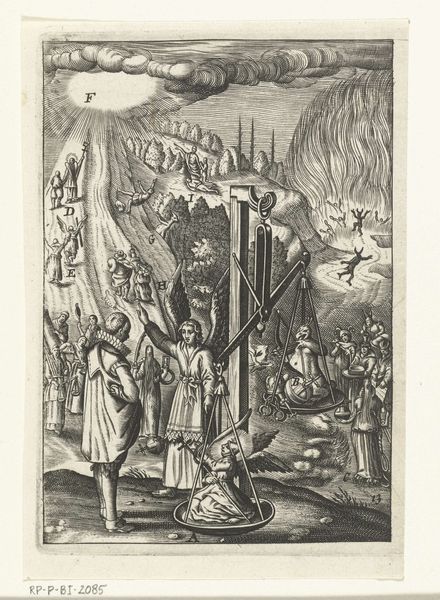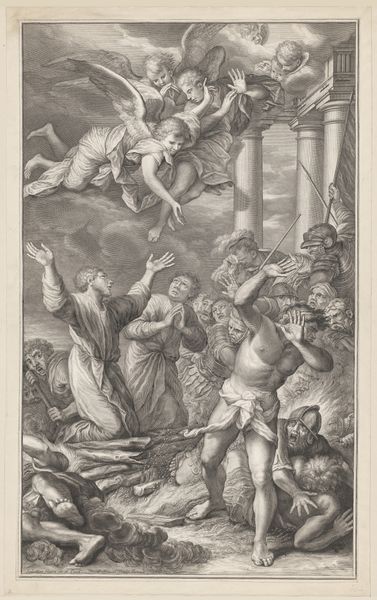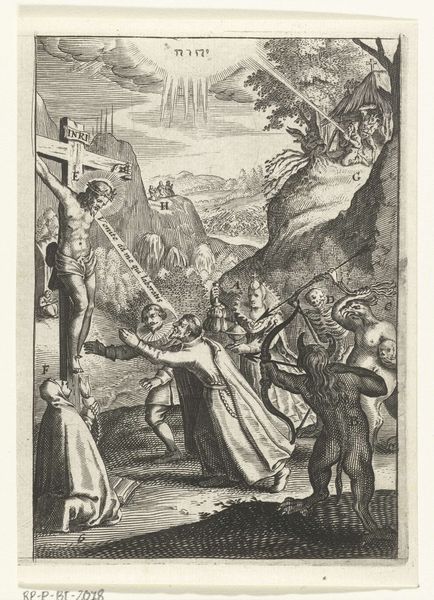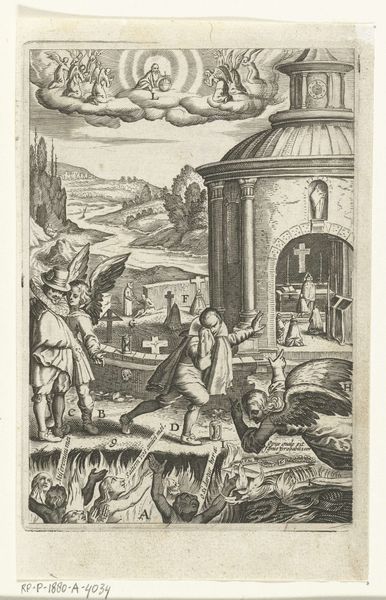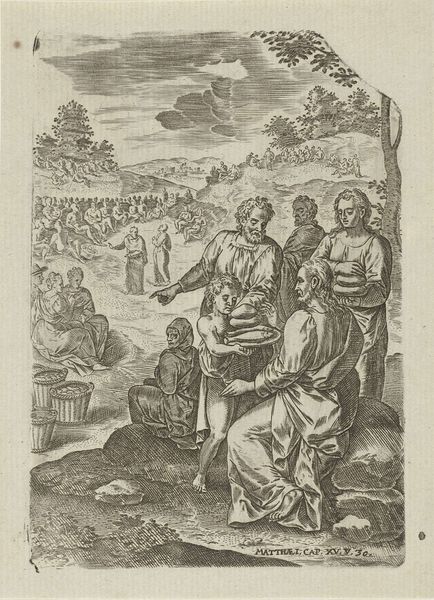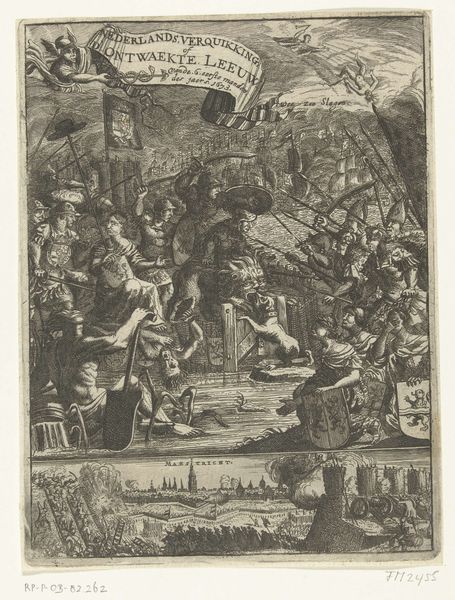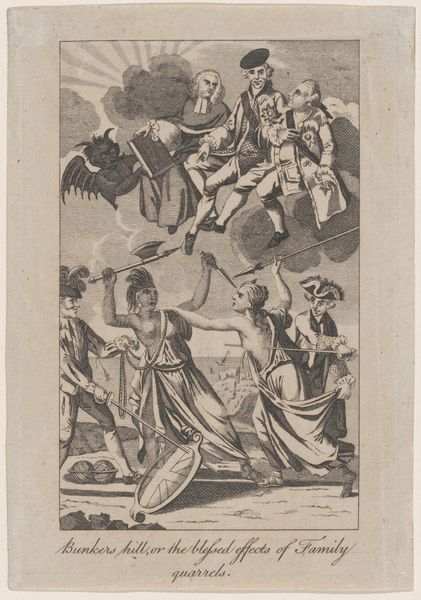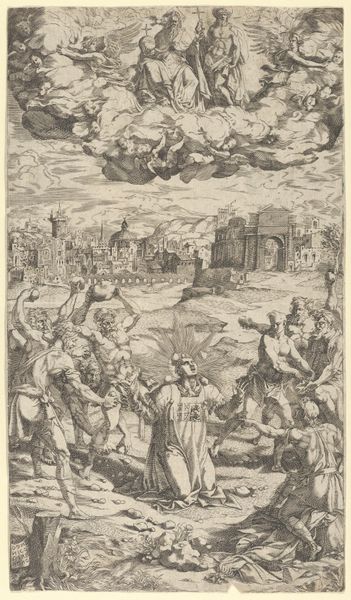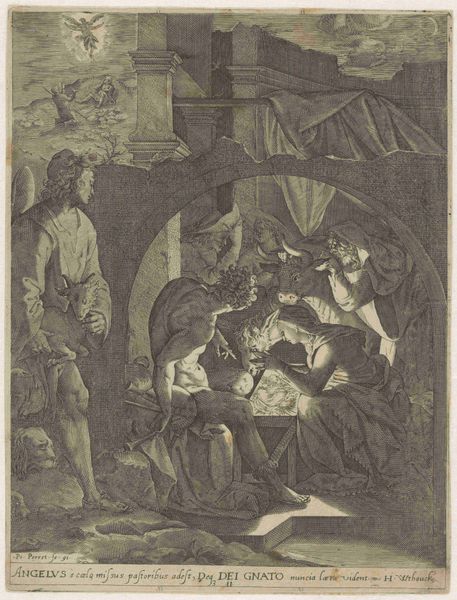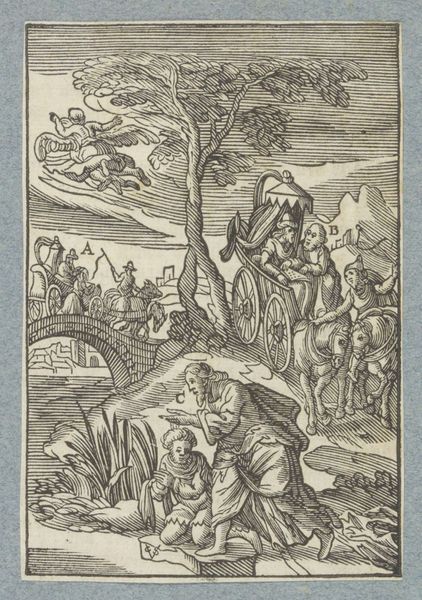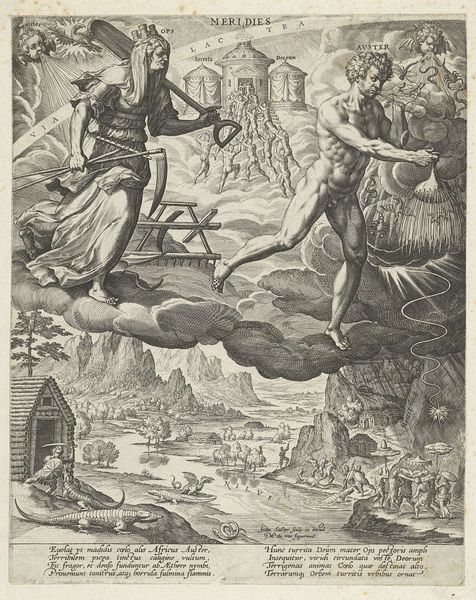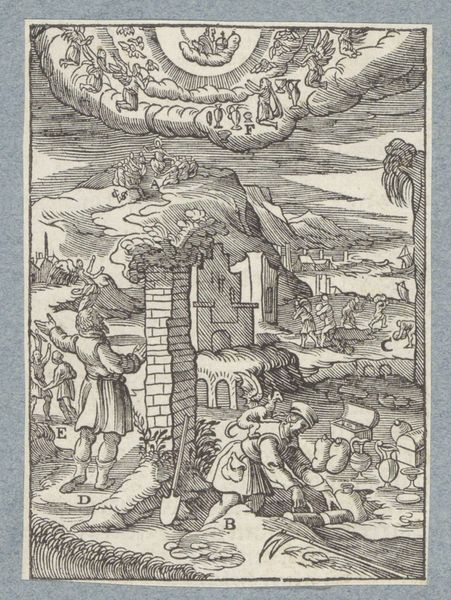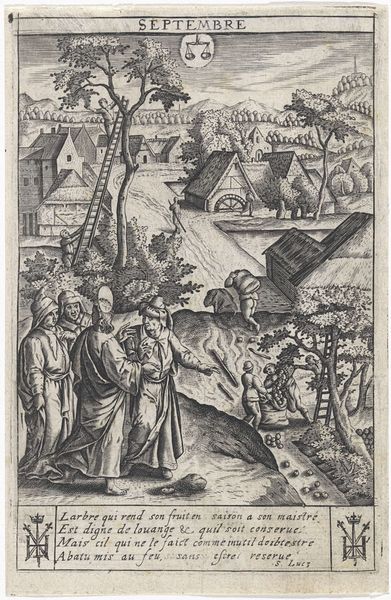
St. Francis Xavier, Apostle of the Indies late 18th or early 19th century
0:00
0:00
drawing, print, paper, engraving
#
drawing
# print
#
paper
#
france
#
genre-painting
#
history-painting
#
engraving
Dimensions: 401 × 393 mm
Copyright: Public Domain
Editor: This engraving, "St. Francis Xavier, Apostle of the Indies" by Jean-Charles Pellerin, from the late 18th or early 19th century, is surprisingly vibrant. The use of color gives a lively feeling to what I imagine is a solemn moment. What jumps out at you in this piece? Curator: It's fascinating how Pellerin uses readily understood visual symbols to impart meaning. Consider the indigenous figure on the left, a cultural shorthand representing the "Indies" – a simplified representation reflecting European perceptions. How do you see that representation functioning in the context of Xavier's mission? Editor: It’s like the artist is showing us the ‘before’ and ‘after’ – the Indigenous person is holding a bow, juxtaposed with those who seem devoted to St. Francis Xavier, almost kneeling before him. It seems to underscore a cultural shift, almost a conversion. Curator: Precisely. The visual language suggests transformation – the figures bathed in light are presented as enlightened, while others remain in symbolic darkness, yet still deferential. The inclusion of angels overhead is also key, signifying divine approval. Consider how these elements, common to religious iconography, worked to reinforce the narrative of conversion and European dominance. How does this reading affect your initial impression of the engraving? Editor: It's made me see it with fresh eyes. While the colors are still vibrant, I see it’s communicating something beyond the surface. It's interesting how cultural context shifts my perspective of the image. Curator: Exactly. These visual motifs tap into deep-seated cultural memories and perpetuate a specific interpretation of history. Recognizing them allows us to understand not only the artist's intent, but also the beliefs and values of the time. It speaks volumes about cultural memory and continuity.
Comments
No comments
Be the first to comment and join the conversation on the ultimate creative platform.
